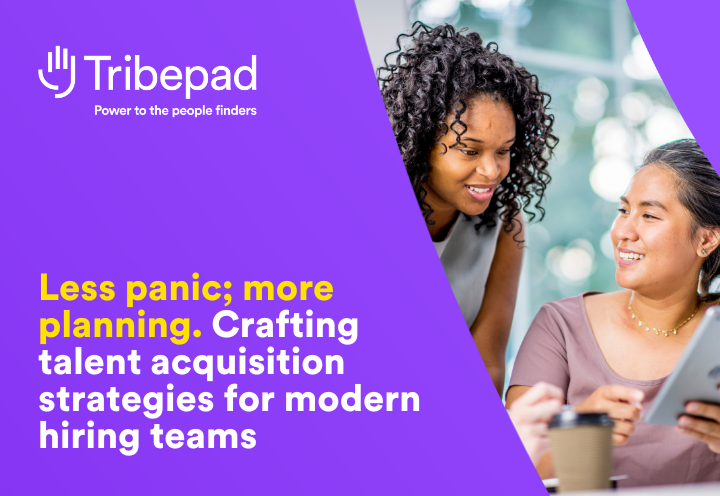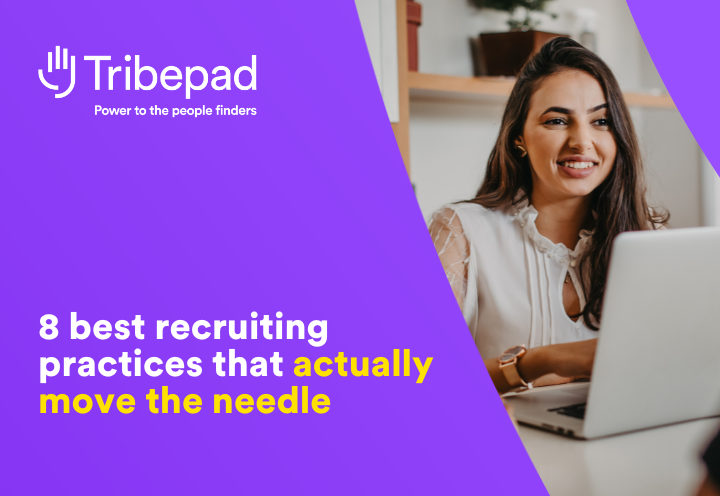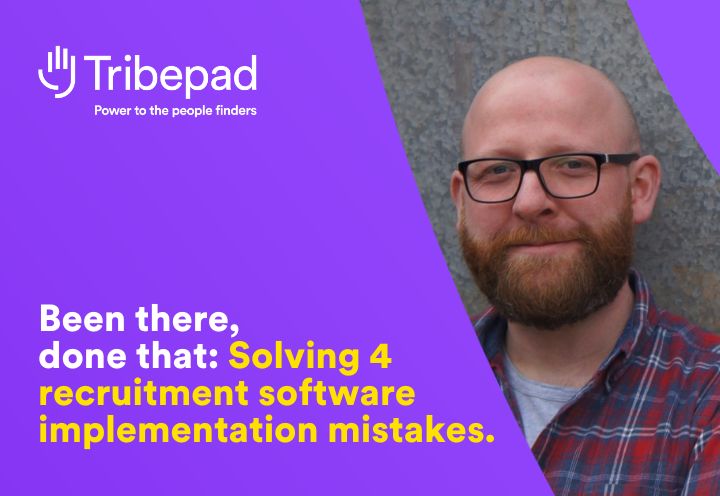Why do some businesses enjoy impressive growth when they’re weathering the same relentless market turbulence as everyone else? And what role do HR and talent acquisition leaders play? Those are the questions we asked Jennifer Lawrence, Chief Transformation and People Officer at Card Factory in Episode 7 of The View.
Card Factory are enjoying fantastic business success, despite the extremely challenging market conditions plaguing retailers. They’ve also won multiple awards for their workplace and culture – including recognition as the fifth ‘Best Big Company to Work For’.
Coincidence? We think not. Catch-up with the seventh episode of The View here. Or keep reading for our main takeaways.
Turbulent conditions demand clear, consistent strategy – galvanised through people
Retailers – especially high street retailers – face a pandemonium of challenges. A “relentless storm”, as The Retail Bulletin put it. Consumer habits are changing. Costs are rising across the board. Competitive pressure is sky-high. Most retailers are squeezed from all angles, and emerging unscathed seems increasingly impossible.
But Card Factory is bucking these trends, showing spectacular growth. “There’s a real buzz about the business right now. We have momentum and we’re achieving good things”, Jennifer says.
So what’s Card Factory’s secret?
According to Jennifer, the answer’s straightforward (although the work’s not easy). It’s about clear, consistent strategy and branding:
We’re seeing the results now of the foundations we’ve laid over the years. We’ve done the really hard work to build our brand and get absolutely clear about who we are, what we do, and why we do it. That’s a framework that acts as our North Star through change.
Card Factory are tackling gnarly problems to help the business continue to grow. They have a strong high-street presence but the growth potential of that channel is inherently limited. So they’re also grappling with the need to create a seamless omnichannel customer experience and continue to grow international partnerships.
These are strategic business issues – not always an arena where people leaders play. HR is often treated as a tactical support function. But what stands out talking to Jennifer is the influence and credibility of HR at Card Factory’s top table.
As you’d expect from a business with a Chief People and Transformation Officer, Card Factory understand the hand-in-hand relationship between business strategy and people. HR isn’t an order-taker sitting somewhere down the ladder.
Having the right people in the right places, equipped with the right skills, embodying and shaping the right culture – these things are what galvanise strategy. And Card Factory is reaping the rewards of that outlook.
Purpose as a springboard to business success
Building the right culture is the lynchpin of strategic delivery – and for Jennifer, culture has to start from purpose. She shares a model developed in her time as Boots Opticians’ Head of HR, that she carries through to Card Factory:
Purpose, delivered through customer experience, unlocked through colleagues, to deliver profit.
This statement reflects a real belief in results being unlocked as a result of being true to your purpose. Purpose isn’t an afterthought to strategy. It’s fundamental. This belief doesn’t minimise the importance of financial success – but it centres people and purpose, and trusts the results will come.
(That’s also a belief very close to our own hearts, given our philosophy of People First, Product Second, Profit Third.)
This strong cultural DNA has been fundamental to Card Factory’s success, helping them navigate the headwinds of change at strategic and operational level.
An authentic culture gives you a framework to navigate thorny problems
Every retailer is facing turbulence right now: Card Factory is no exception. Jennifer talks about the pressures of national living wage increases, for example, plus the rising costs of goods and widespread distribution issues.
But Card Factory’s strong culture code gives them a framework to guide how they react to these issues:
The best companies hold true to what they believe during difficult times. That doesn’t mean making poor investment choices or hanging onto investments when they need to consider customer and shareholder requirements. But they hold true to what they believe and that guides the decisions they make.
Jennifer shares the example of their reward roadmap. Card Factory aspires to be a market-median organisation on pay and benefits, so they gather data annually to evaluate and inform investment choices.
But cost pressures mean there’s less money in the pot. That’s a stark business reality: there’s no magic money tree.
You can’t keep everyone happy, when difficult decisions have to happen. But because Card Factory has a culture of transparency, trust, and authenticity, they’re better able to navigate those gritty moments.
The most important thing is to keep people engaged. Communicate with them. Take them on the journey, so everyone feels they’ve had input and understands why choices have been made.
An authentic culture is the bedrock of talent attraction and retention
Like most retailers, cardfactory experiences major seasonal peaks. They normally have around 8000 colleagues but for the Christmas peak, they hire another 6000. That’s an additional 75% of their workforce 😮💨.
Employer brand and EVP are crucial, to meet that hiring demand – and those things again come back to a consistent, clear, authentic culture.
Read more: 41 question employer brand checklist for retailers
As Jennifer says:
It’s critical we capture what’s important to us and communicate that externally, so when candidates are choosing, they see Card Factory as an attractive employer.
But the challenge with an EVP is, you’re going out internally and externally and telling people what it’s like to be a colleague here. If that doesn’t play out when someone joins, you’ve just gone through an expensive process of recruitment and nobody’s happy; nobody wins. Your EVP must hang from your authentic purpose, culture and brand.
When you get that right, it becomes a virtuous circle. You consistently attract people who align to your brand and retain them longer, where they contribute more to fulfilling your business strategy. Purpose -> people -> profit.
But where do you start?
Understanding and shaping culture starts with listening
Whether you have thousands of employees or tens, culture-building starts from the same place: listening to your people.
Your people will tell you what it’s like working here” Jennifer says. “So ask them. And then consider if that’s what you want, or whether there’s a disconnect that the people agenda needs to work with.
Of course, the process can become complex – especially for large, distributed organisations like retailers. But the principle is simple.
You’ve got to really listen and understand. It’s relentless. You need to show though engagement surveys, forums, whatever listening mechanisms you use, that you listen to your people; properly consider their perspectives; and then act off the back of that.
Of course we can’t do everything. But we listen to everything. We respond to our people and explain about our decision-making process. It’s this constant engagement.
We’ve now done that cycle over and over and over, so that’s built a foundation of trust and confidence in our culture. That’s why we’re now winning awards, because we built that foundation long-term.
Empower people leaders to embody culture
Jennifer also emphasises how important people leaders are within the culture-building equation.
The people function is there is unlock, inspire, and engage – but ultimately it’s leaders’ responsibility to lead their people. People join a business because there’s a connection with an individual – but that relationship can also be the de-railer, if you’re not engaged and inspired, supported and developed.
Employees don’t experience culture through snazzy internal decks. They experience culture through their day-to-day interactions, especially with managers and leaders.
For example, SHRM say 76% of employees think managers set workplace culture. And 58% of employees’ who’ve left a job because of workplace culture cited their manager as the main reason.
The upshot is, if you want to strengthen culture look beyond the people team. For Card Factory, that’s meant investing into coaching for people leaders, for instance, to help build a culture of coaching.
The people function belongs at the top table
Jennifer’s lessons don’t just apply to retail. For any organisation struggling with turbulent conditions, the take-away is the same: people are the key enablers for every business strategy; and HR are the key enablers for your people.
The people function belongs at the top table. And not just because you care about your people, but because every business objective depends on the foundations of talent acquisition and talent management.
And as Card Factory shows, when you build those foundations you create a springboard for trend-defying successes.
Tribepad is the trusted tech ally to smart(er) recruiters everywhere. Combining ATS, CRM, Video Interviewing, and Onboarding, our talent acquisition software is a springboard for faster, fairer, better recruitment for everyone.
Trusted by businesses like Pizza Hut, KFC, Subway, Tesco, Superdry, Compass Group, Sodexo, Carpetright and Sofology, 25 million people in 16 languages use Tribepad.




